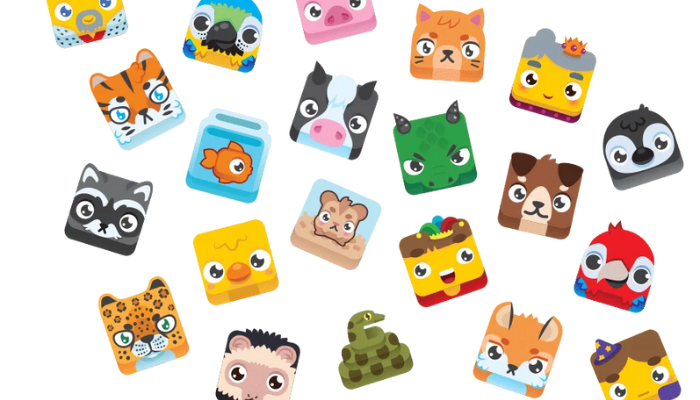The term booklet game may sound simple, but it carries endless possibilities for entertainment, education, and creativity. A booklet game is an interactive activity usually played through a small booklet containing instructions, puzzles, challenges, or role-playing scenarios. Unlike traditional board games, booklet games rely on compact design, portable format, and written storytelling that blends reading with play. In today’s digital-first world, the resurgence of booklet games proves that low-tech, imaginative fun still holds powerful appeal.
Whether you’re a teacher searching for innovative classroom tools, a parent looking for screen-free entertainment, or a gamer interested in niche formats, booklet games offer something for everyone. They combine storytelling, interactivity, and problem-solving into one cohesive experience that fits in the palm of your hand. This guide explores everything you need to know—from history and benefits to creative variations and strategies—so you can fully embrace the world of booklet games.
What is a Booklet Game? A Complete Overview
A booklet game is typically a small, printed or digital booklet filled with structured gameplay. Instead of relying on physical boards, dice, or cards, the game is contained within the pages of the booklet itself. Players progress by following instructions, solving puzzles, or making decisions that lead them to different outcomes. This format makes booklet games compact, portable, and versatile—ideal for classrooms, travel, or solo play.
Historically, booklet games gained popularity as educational tools and puzzle books but have since expanded into broader genres. From interactive story adventures to classroom quiz booklets, these games have proven that engaging design doesn’t always need high-tech gadgets. They cater to a wide demographic, from children learning math through fun exercises to adults solving complex role-playing adventures.
The History and Evolution of Booklet Games
The origins of booklet games trace back to puzzle books and “choose-your-own-adventure” stories. Early versions often featured riddles or crosswords collected in compact booklets, designed to challenge the mind while entertaining the reader. As printing became cheaper, booklet games evolved into educational formats, helping teachers create interactive lessons long before digital learning tools existed.
In the modern era, booklet games are experiencing a revival. Indie game designers and educators alike are embracing the low-cost, high-creativity potential of this format. Many contemporary booklet games integrate QR codes or digital enhancements, merging traditional reading with online interactivity. This blend of old and new makes booklet games relevant in today’s fast-paced, tech-heavy culture.
Educational Benefits of Booklet Games
Booklet games shine as learning tools because they combine reading comprehension, problem-solving, and interactive play. Unlike passive learning methods, booklet games require active engagement. Students might solve math puzzles, answer trivia, or follow scenarios that strengthen critical thinking. This level of involvement helps learners retain information better while enjoying the process.
Teachers often use booklet games to break away from rigid lesson plans. Whether in the form of quiz booklets, vocabulary challenges, or science experiments outlined as interactive missions, booklet games create hands-on experiences that spark curiosity. Parents also find them useful for at-home learning, offering kids screen-free activities that build both skills and imagination.
Popular Types of Booklet Games
The diversity of booklet games is what makes them so appealing. Some of the most popular types include:
- Puzzle Booklets: Featuring word searches, crosswords, Sudoku, or riddles, these games test logic and language skills.
- Story-Based Booklet Games: Inspired by “choose-your-own-adventure” books, these allow players to make choices that alter the story’s direction.
- Classroom Booklet Games: Designed for education, these include quizzes, scavenger hunts, and problem-solving missions formatted like workbooks.
- Travel Booklets: Compact games meant for long journeys, often featuring bite-sized challenges that can be played solo or with family.
Each type of booklet game serves different purposes, but they all share one common trait: interactivity. By combining storytelling with problem-solving, they transform reading into an immersive experience. The beauty of booklet games lies in their adaptability—they can be designed for fun, learning, or a mix of both.
How to Create Your Own Booklet Game
Creating a booklet game is surprisingly accessible, requiring little more than creativity, paper, and structure. First, decide on your theme—puzzles, storytelling, or educational challenges. Next, outline the flow of gameplay. Will players move through numbered pages? Will choices lead them to different sections? These decisions define how interactive and engaging the game will be.
Design is just as important as content. A clear layout with engaging visuals helps players stay immersed. For educators, worksheets can be designed as “missions” to encourage participation. For storytellers, illustrations and branching storylines enhance the imaginative element. Modern creators often use free design software to format their booklets, then print and distribute them as physical copies or PDFs. With growing interest in booklet games, self-publishing online or sharing with classrooms has never been easier.
Conclusion
Booklet games are more than just a nostalgic throwback—they’re a modern, versatile tool for fun and learning. Compact, creative, and accessible, they combine the charm of traditional puzzles with the immersive power of interactive storytelling. From classrooms to living rooms, booklet games continue to captivate players of all ages, proving that meaningful play doesn’t require a screen.
If you’re looking for a fresh, engaging way to entertain or educate, the booklet game is a timeless choice. Whether purchased, downloaded, or created from scratch, these games remind us that imagination is the best playing field of all.
FAQs About Booklet Games
1. What is a booklet game?
A booklet game is an interactive activity contained within a small booklet, featuring puzzles, quizzes, or branching stories.
2. Are booklet games suitable for children?
Yes, they are often designed for kids, helping them learn while having fun.
3. Can adults enjoy booklet games too?
Absolutely—many booklet games include advanced puzzles or role-playing adventures that appeal to adults.
4. Do booklet games require any special equipment?
No, most booklet games only require the booklet itself and sometimes a pencil or pen.
5. How are booklet games different from board games?
Unlike board games, booklet games don’t need large setups or pieces; everything is contained in the booklet.
6. Are booklet games available digitally?
Yes, many modern booklet games are available as downloadable PDFs or apps.
7. Can I create my own booklet game?
Yes, with basic writing and design tools, anyone can design a booklet game.
8. Are booklet games useful in classrooms?
Definitely—they promote active learning, teamwork, and problem-solving.
9. How long does it take to play a booklet game?
It varies; some take just minutes, while story-based games can last hours.
10. Where can I find booklet games?
They’re available in bookstores, online platforms, educational stores, and printable PDF websites.



